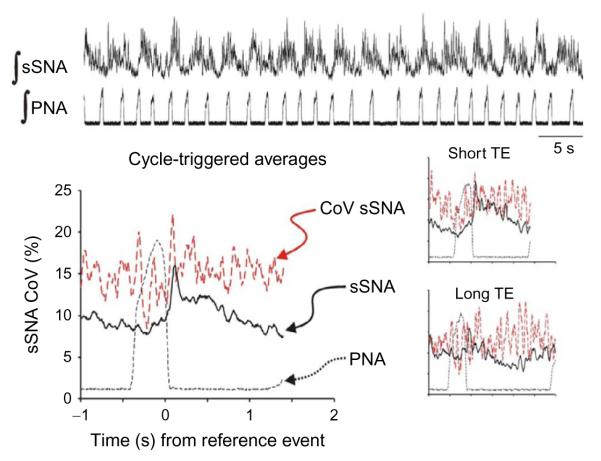FIGURE 3.
Sympatho-respiratory coupling is low following chronic-sustained hypoxia. The bursts of ∫ sSNA do not appear time-locked to ∫ PNA. Instead of a 1:1 coupling pattern, 2 bursts of ∫ sSNA are coupled to three bursts of ∫ PNA. Nevertheless, the cycle-triggered average of ∫ sSNA has a “postinspiratory” burst of activity or a peak of activity associated with the inspiratory–expiratory phase transition; the nadir of ∫ sSNA is not close to 0 with the lowest values of ∫ sSNA occurring after the start of inspiration; and the coefficient of variation (CoV) is two-to-three times that of the chronic intermittent hypoxic-conditioned rat across the respiratory cycle. Insets: Cycle-triggered averages; even selecting the short and long respiratory cycles (duration of expiration, TE) does not improve the signal-to-noise ratio of the ∫ sSNA. Traces as in Fig. 2.

